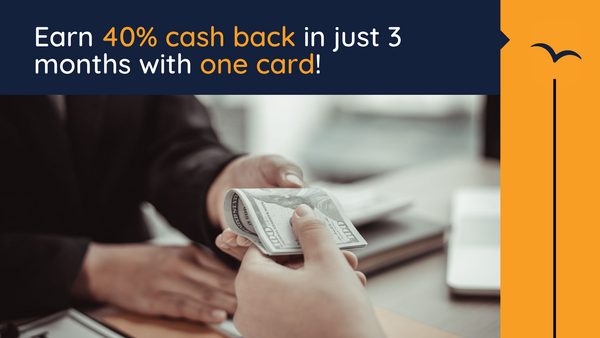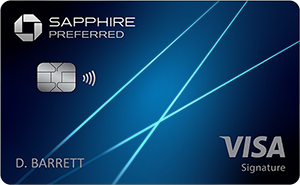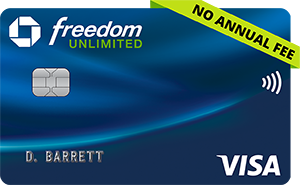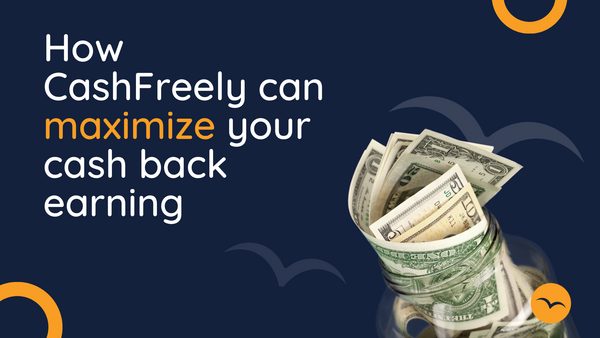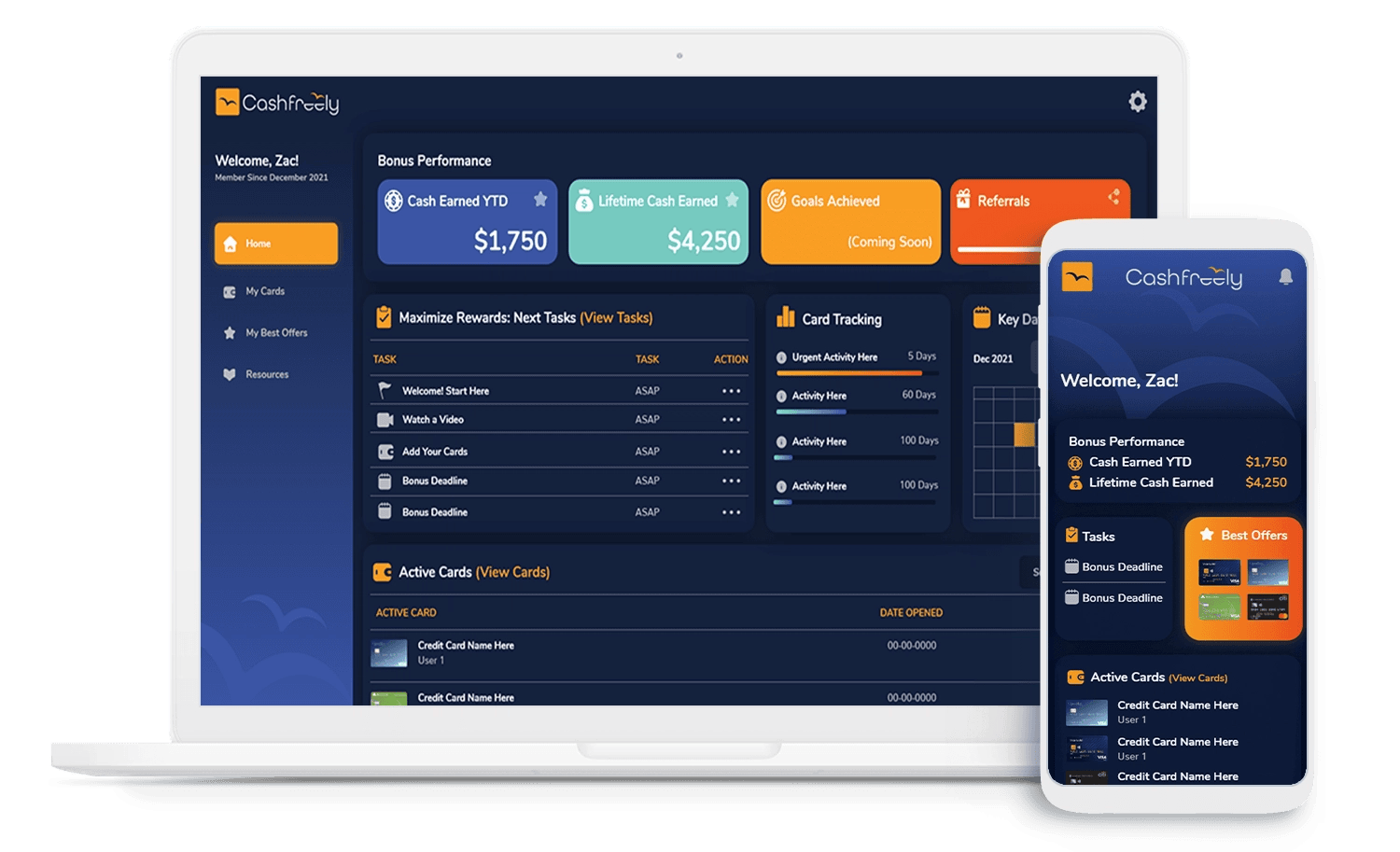Updated 4/3/25: The Chase Sapphire Preferred® Credit Card now has a 100,000 points bonus when you spend $5,000 in 3 months from account opening (up to $1,000 cash back). Because of this new offer, the scenarios below may not be accurate.
If you’re new to the world of cash back credit cards, then you may be wondering what all the hype is about. Or, maybe you’ve dipped a toe into the cash back rewards world but feel you have a lot still to learn. Of course, getting started is the trickiest part.
But once you’ve realized the rewards, it’s unlikely that you will want to stop. Opening one new card could give you an additional $600 cash back in just 3 months.
So, what are you waiting for?
How to Determine Which Cash Back Card is Right for You
How do you get started in the world of cash back credit cards? By opening just one cash back card, using it, and earning the cash back bonus. In order to do this, though, you have to determine which cash back card to go for. This is where a lot of people get stuck.
The number of cash back cards to sift through can feel overwhelming and give you decision paralysis. While the number of available cards is high, there are a few factors to consider which will help you narrow down your choices.
We’re going to talk about two examples of people who earned an additional $250 and $600 by opening up a new cash back card vs. using their old one. Let’s take a look at these two different scenarios and how to determine which card you should get
How Much Are You Able to Spend in a Few Months’ Time?
Obtaining cash back rewards doesn’t make sense if you can’t pay off your credit card in full each month. While the cash back may feel nice, it will be reduced by any interest you are paying by not paying your bill in full. With this in mind, it’s important to find a cash back card with a spending amount that you know is feasible.
Let’s take Jordan for example. Jordan is a teacher with 4 kids who can easily spend a little over $1,300 a month on a new credit card in order to qualify for a cash back bonus. This equates to $4,000 in 3 months. Thus the Chase Sapphire Preferred could be a great choice. By spending that amount and hitting the bonus, Jordan would be awarded 60,000 points, with each point being equal to 1 cent when redeemed through Chase’s rewards platform, Chase Ultimate Rewards. This equals to $600 cash back in 3 months after he hits the bonus. Even after you subtract the $95 annual fee Jordan would still have an extra $705 in his pocket.
Let’s look at another example. Riley is a single parent who, when reviewing credit card offers, knows there is no way to spend that much money on a new credit card each month. In this case, Riley should consider a card such as the Chase Freedom Unlimited. This card only requires you to spend $500 in the first 3 months, or a little over $166 a month. After spending the $500, Riley would receive $250 cash back and no annual fee to cut into those earnings.
🔥 Best Offer This Year! Our #1 personal card that we recommend most often. Hands down the single best "starter card" for beginners and MVP card for overall value and flexibility. For those looking for cash back, 100,000 Chase Ultimate Reward points can redeemed for $1,000 cash back.
With this card, you typically earn 3x on dining (including takeout and select delivery services); 3x on drugstores; 5x on travel purchased through Chase Travel℠; and 1.5x on everything else.
How Much Cash Back Do You Desire on Top of the Bonus?
While Jordan is working to spend enough money in three months to qualify for the $600 bonus, he’s also earning cash back on his everyday purchases. If he spends the $1,300 each month needed on average to hit the sign up bonus, he can earn between 1-5x points on his purchases. With one point equaling one cent in the Chase Ultimate Rewards platform, Jordan will earn an additional $40-$200 back in the 3 months while he’s also hitting the spending bonus. All of this is earned by just using his new Chase Sapphire Preferred card.
The same goes for Riley. While she is working to qualify for the $250 bonus, she’s also earning cash back on her everyday purchases. If she spends $200 per month on her new Chase Freedom Unlimited card she will earn between 1.5-5% cash back. With just the $200 worth of spending, she could earn $10-30 extra over those three months. That’s a lot of free drinks from her favorite coffee shop! Of course, if she uses her card for purchases more than $200, she will earn more money back.
How Will You Use the Card After You Hit the Sign Up Bonus?
The Chase Sapphire Preferred also gives you 5x the number of points for travel booked through Chase Travel℠ portal, 3x points on dining, including eligible delivery services, takeout and dining out, 3x points on online grocery purchases (excluding Target, Walmart and wholesale clubs), 3x points on select streaming services, and 2x points on all other travel plus 1x points on everything else. The card also offers bonus points equal to 10% of your total purchases made the previous year on your card anniversary. Jordan loves to dine out, making this a great option for him.
The Chase Freedom Unlimited Card will give you 5% cash back on travel purchased through the Chase Travel℠ portal, 3% back on dining at restaurants (including take out and eligible delivery services), 3% back on drugstore purchases, and 1.5% back on all other purchases. If you don’t spend a lot each month and want to avoid an annual fee, this card makes a lot of sense.
🔥 Best Offer This Year! Our #1 personal card that we recommend most often. Hands down the single best "starter card" for beginners and MVP card for overall value and flexibility. For those looking for cash back, 100,000 Chase Ultimate Reward points can redeemed for $1,000 cash back.
With this card, you typically earn 3x on dining (including takeout and select delivery services); 3x on drugstores; 5x on travel purchased through Chase Travel℠; and 1.5x on everything else.
How Do You Feel About Annual Fees?
The Chase Sapphire Preferred does have an annual fee of $95, which may turn people off. Jordan isn’t bothered by this, as he knows when he hits the sign up bonus and receives $600, that still leaves him with just over $500 of cash in his pocket that he wouldn’t have had otherwise. Even with the $95 annual fee taken out, Jordan is earning 15% on the $4,000 he spends with the Chase Sapphire Preferred card.
Quick note on annual fees: If Jordan doesn’t feel like having this card forever, he doesn’t have to keep it past the first year. He can “downgrade” to a no annual fee card or cancel the card.
The Chase Freedom Unlimited Card does not have an annual fee making it a great choice for someone like Riley, who is skeptical about opening a new credit card and not getting the full benefits out of it. When Riley spends $500 on her card in the first three months of opening, she will receive $250 cash back. This is a whopping 50% return on her $500 spend! This also makes it an easy choice for her being she is uncomfortable with the idea of having to downgrade the card once she stops using it.
Do You Have Any Large Expenses Coming Up?
A great time to open a cash back credit card is when you know you will have a large expense coming up. This could be something you need to have fixed inside your home or on your car, a bigger travel expense, or general shopping. If you have an idea of how much you will spend, you can determine which card makes the most sense and will give you the highest bonus.
The great part about using a card for a large expense is that you can cover the entire amount you need to spend in a short amount of time, easily earning your signup bonus!
How Getting Just One New Cash Back Card Fares
If you’re still on the fence about whether it makes sense to open a new cash back card, let’s consider what Jordan and Riley have earned in cash back with just one new card in 3 months.
Since the 3 months have passed since opening his card, Jordan has earned $705 cash back. He loves to dine out and spends his $2,000 taking his family out to dinner over the course of 3 months, thus earning him an extra $60 back. This means Jordan will get $765 back within a 3 month period by spending $4,000 on his new card.
If Jordan were not to open a new card and just continue using his old 1.5% cash back card, he would only be getting back a mere $60 after spending the same amount. This is a difference of $705 just by opening up and using a new cash back card.
For Riley, after 3 months she has earned the $250 cash back welcome bonus. While she is working towards spending the $500 to earn the bonus, she uses her card for groceries which cost $200 a month. This gives her 1.5% back, which equals an additional $9. Riley will receive $209 of cash back within a 3 month period.
If she were to wait on opening a new card and use her old 1.5% cash back card for the $600 worth of groceries she would only receive $9 back. This is a difference of $200 just by obtaining a new cash back card!
The Bottom Line
While deciding on a cash back card can be daunting, you won’t regret the decision to go for it once you receive your bonus. Analyze your situation to determine what makes sense and just get started with one card. If you know you can pay off your card in full, one cash back card can give you an additional $200-705 within 3 months to use however you see fit. It’s a win-win situation.
🔥 Best Offer This Year! Our #1 personal card that we recommend most often. Hands down the single best "starter card" for beginners and MVP card for overall value and flexibility. For those looking for cash back, 100,000 Chase Ultimate Reward points can redeemed for $1,000 cash back.
With this card, you typically earn 3x on dining (including takeout and select delivery services); 3x on drugstores; 5x on travel purchased through Chase Travel℠; and 1.5x on everything else.
